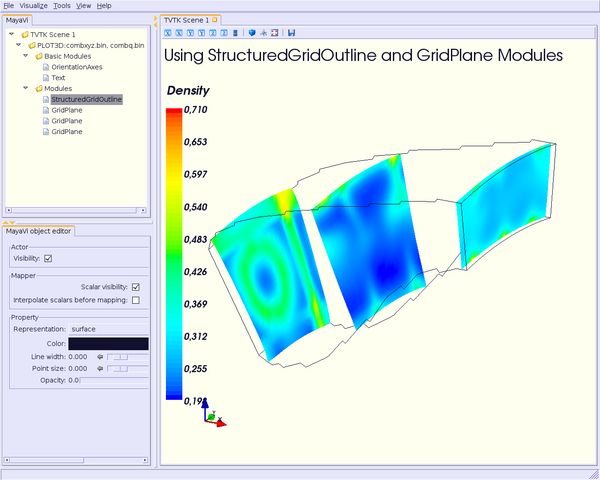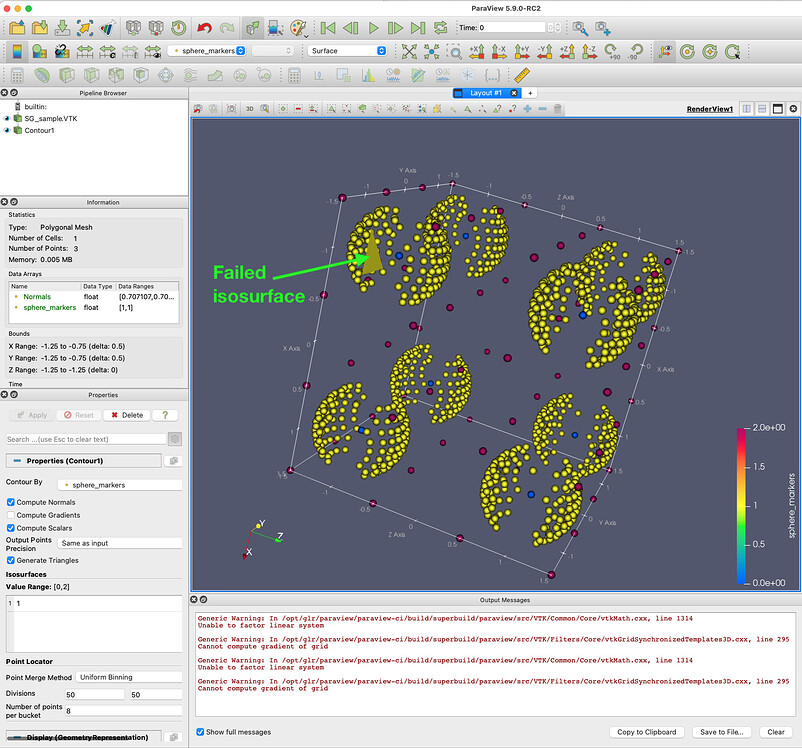

- #ISOSURFACE MERGE RANGE PARAVIEW MOVIE#
- #ISOSURFACE MERGE RANGE PARAVIEW SERIAL#
- #ISOSURFACE MERGE RANGE PARAVIEW WINDOWS#
#ISOSURFACE MERGE RANGE PARAVIEW SERIAL#
The serial and parallel versions of Paraview are both compiled for 32 bit and 64 bit. Paraview new version 3.2.1 is currently the latest stable version.

This should generate your isosurface.īasic introduction to Paraview: Intro to ParaviewĬreating isosurfaces and adding velocity vectors: Creating Isosurfaces/Velocity VectorsĮxtracting Grids: Extracting Grids in ParaviewĬreating Streamlines: Creating streamlines in Paraview Issues about Paraview 3.2.1 You may also generate a range of values here, or delete values you do not wish to use. Go to the Parameters tab and add values that you would like to generate an isosurface for.This sets the number of different colors in the color map. Go to the Display tab and make sure the Color by: is set to Point Result.Enter equation that you wish to solve for into the calculator and click Accept.Apply Calculator filter by going to Filter > Calculator.If the unit vector is placed in front of the scalar quantity in the muliplication, it will cause the value to always be 1.Įnsa_Fields_1*iHat + Ensa_Fields_2*jHat + Ensa_Fields_3*kHatĪn isosurface represents a surface drawn consisting of points of a constant value within a volume of space. Make sure the scalar quantity is in front of the unit vector. The stream tracer generates streamlines in a vector field from a collection of seed points. They can be oriented and scaled by input point-centered scalars and vectors. The glyph filter generates a glyph (arrow, cone, line, sphere, etc) at each point in the input data set. The cut filter extacts a portion of the data that lies along a specified plane or sphere. The contour filter computes isolines or isosurfaces using a selected value. This process is described in PHT File Format. Specifically when using ParaView with Phasta, you must create a meta file. ParaView supports many file formats natively, including that of several commercial visualization packages such as Ensight. Please see the Running ParaView In Parallel page. usr/local/paraview/latest/serial/bin/paraview On the Linux computers, the ParaView executable is located at It also steps through some of the visualization techniques.
#ISOSURFACE MERGE RANGE PARAVIEW MOVIE#
If you have trouble with the installation, this movie might be helpful. It is a tgz file that should be saved and exploded where you would like to keep ParaView.
#ISOSURFACE MERGE RANGE PARAVIEW WINDOWS#
Here is an executable that should work on windows link. Here is the tutorial for Building ParaView. The PHASTA reader is able to read restart files from Phasta 1.9. This tutorial was made using Paraview version 1.2. Make sure you have your Phasta restarts and a copy of ParaView.

Then open color map editor for the geometry, on that you’ll see a right angle triangle under ‘mapping data’ option filled with two different colors and their shades, now next to that some tiny icons are situated, first click on ‘set range’ icon (the one with double arrows towards opposite sides shown with c written at bottom) and set the appropriate range (in my case its 0 and 1). So, first load the geometry (in my case case.OpenFOAM, and then read it with inbuilt paraview OpenFOAM reader.) from file > open Process is essentially, if a person want to change the color, first he/she need to know the RGB codes of grey (and its shades), and blue (and its shades). I wasn’t sure where to look on paraview to change the colors of phases.Īfter extensive search and ‘clicking all buttons’ I figured it out.


 0 kommentar(er)
0 kommentar(er)
